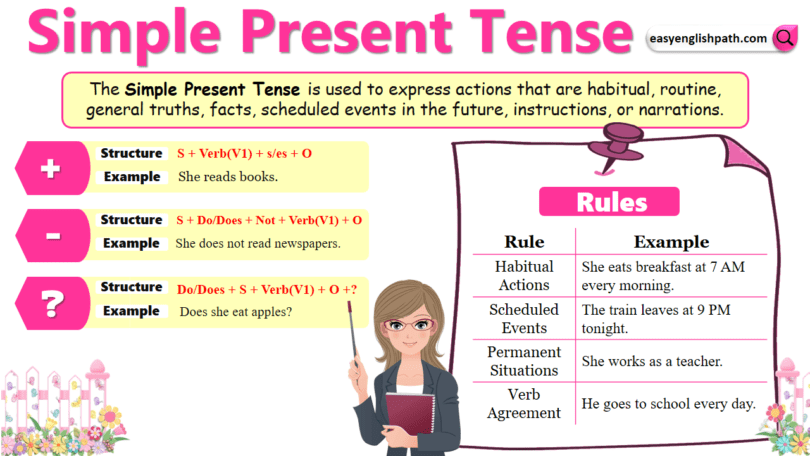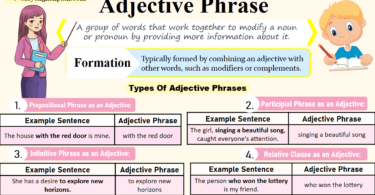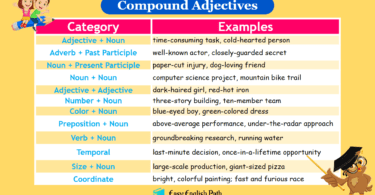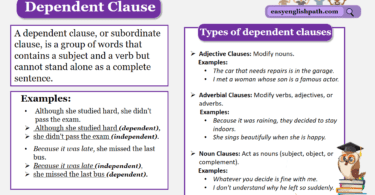The Simple Present Tense is used to describe daily routines, habits, general facts, and fixed schedules. It follows a simple structure, using the base form of the verb. However, for he, she, or it, we add -s or -es to the verb to maintain subject-verb agreement in sentences.
What is Simple Present Tense?
The Simple Present Tense describes actions that happen regularly, daily routines, facts, and general truths. It uses the base form of the verb, adding -s or -es for third-person singular subjects (he, she, it).
- I play tennis every Saturday.
- She eats breakfast at 7 a.m.
- The sun rises in the east.
- They speak French fluently.
Simple Present Tense Structure
The Simple Present Tense basic structure is:
Subject+ Base form of verb (infinitive)(+-s/-es for third-person singular)
- Subject:
This can be a person or thing, doing the main action in the sentence. We have the following subjects: I, you, he, she, it, we, or they, or any other noun or pronoun.
2. The base form of the verb (infinitive):
This is the basic form of the verb which does not have any endings. For example, play, eat, speak, study, etc.
3. -s/-es for third-person singular:
-S and -ES are added to the main verb when the subject is third-person singular (he, she, it). They are never used with other subjects.
-S is added to most verbs (e.g., plays, eats, speaks). For verbs ending in -s, -sh, -ch, -x, or -o, we add -ES (e.g., washes, teaches, fixes, goes).
How to Create Simple Present Tense?
1. Affirmative Structure:
Positive structure is used to describe actions that happen regularly or facts that are admitted true worldwide. You need to use the base form of the verb (infinitive), adding S or ES for third-person singular subjects.
(Subject + Base form of the verb (infinitive) (+ -s/-es for third-person singular)
Examples:
- She plays tennis every Saturday.
- They study English in the evening.
2. Negative Structure:
This structured is used to Indicate actions that don’t happen or are not true. We should use do not (or does not for third-person singular) before the base form of the verb.
(Subject + do/does + not + Base form of the verb (infinitive)
Examples:
- She does not play tennis every Saturday.
- They do not study English in the evening.
3. Interrogative Structure (Question):
This structure is used to ask questions about actions or routines. it begins with Do (or “does” for third-person singular), and it is followed by the subject and the base form of the verb.
(Do/Does + subject + Base form of the verb (infinitive)
Examples:
- Does she play tennis every Saturday?
- Do they study English in the evening?
4. Interrogative Negative Form (Negative Question):
This structure is used to ask questions in a negative form. Do not or Does not will be used for third-person singular before the subject and the base form of the verb.
Do/Does + not + subject + Base form of the verb (infinitive)
Examples:
- Doesn’t she play tennis every Saturday?
- Don’t they study English in the evening?
Simple Present Tense Rules
| Rule | Explanation | Examples |
|---|---|---|
| 1. Subject-Verb Agreement | Add -s or -es for he, she, it. Use the base form for I, you, we, they. | – He plays football. – They speak English. |
| 2. When to Add -S or -ES | – Most verbs take -s. – Verbs ending in -s, -sh, -ch, -x, -o take -es. – Verbs ending in consonant + y, change y to i and add -es. | – She writes emails. – He goes to school. – She studies hard. |
| 3. Expressing Habits & Routines | Used for regular actions. | – I wake up at 6 a.m. – She goes to the gym daily. |
| 4. Stating General Truths & Facts | Used for things that are always true. | – Water boils at 100°C. – The Earth revolves around the Sun. |
| 5. Fixed Schedules & Timetables | Used for transport, events, and timetables. | – The train leaves at 5 p.m. – The school opens at 8 a.m. |
| 6. Giving Instructions or Directions | Used for steps and commands. | – You mix sugar with water. – First, you turn on the computer. |
| 7. Future Events (Timetables & Programs) | Used for scheduled future actions. | – The movie starts at 7 p.m. – My flight arrives tomorrow. |
| 8. Making Negative Sentences | Use don’t (I, you, we, they) or doesn’t (he, she, it) + base verb. | – I don’t like spicy food. – She doesn’t play tennis. |
| 9. Asking Questions | Use Do or Does at the beginning. | – Do they like coffee? – Does she play the piano? |
Simple Present Tenses Examples
| Subject | Verb | Example Sentence |
| I | eat | I eat breakfast every morning. |
| She | reads | She reads books in her free time. |
| They | play | They play basketball after school. |
| He | works | He works at a bank. |
| The train | arrives | The train arrives at 9 a.m. |
| We | walk | We walk to school together. |
| Cats | sleep | Cats sleep a lot during the day. |
| The Earth | revolves | The Earth revolves around the sun. |
| It | snows | It snows in the winter. |
| Dogs | bark | Dogs bark when they hear a noise. |
Common Mistakes
1. Incorrect Subject-Verb Agreement
❌ He go to school.
✅ He goes to school.
Always add -s or -es for third-person singular (he, she, it).
2. Adding -s with “I, you, we, they”
❌ They likes ice cream.
✅ They like ice cream.
Never add -s or -es for plural subjects.
3. Using “do” or “does” in positive sentences
❌ She does plays tennis.
✅ She plays tennis.
“Do” or “does” is not used in positive statements.
4. Wrong Negative Form
❌ He don’t like coffee.
✅ He doesn’t like coffee.
Use doesn’t for he, she, it and don’t for I, you, we, they.
5. Wrong Question Formation
❌ Does she likes pizza?
✅ Does she like pizza?
After “does,” always use the base form of the verb.
6. Confusing Simple Present with Present Continuous
❌ She is go to school every day.
✅ She goes to school every day.
Use the simple present for routines, not continuous.
7. Forgetting -es with Verbs Ending in -s, -sh, -ch, -x, -o
❌ He watchs TV.
✅ He watches TV.
For verbs ending in -s, -sh, -ch, -x, -o, add -es.
8. Using “am/is/are” Instead of the Base Verb
❌ She is go to work daily.
✅ She goes to work daily.
Never use “am/is/are” with simple present verbs.
FAQs About the Simple Present Tense
Q: When do we use the simple present tense?
Ans: For habits, routines, facts, and schedules.
✔ Example: The sun rises in the east.
Q: When do we add -s or -es to verbs?
- -s for most verbs (plays, eats).
- -es for verbs ending in -s, -sh, -ch, -x, -o (watches, goes).
- -y → -ies if preceded by a consonant (studies, carries).
Q: How do we make negatives?
Ans: Use don’t (I, you, we, they) and doesn’t (he, she, it).
✔ Example: She doesn’t like coffee.
Q: How do we ask questions?
Ans: Use Do or Does + subject + base verb.
✔ Example: Does he play football?
Q: What’s the difference between simple present and present continuous?
- Simple Present → Routine/fact (She walks to school.)
- Present Continuous → Happening now (She is walking.)
You May Also Like this






